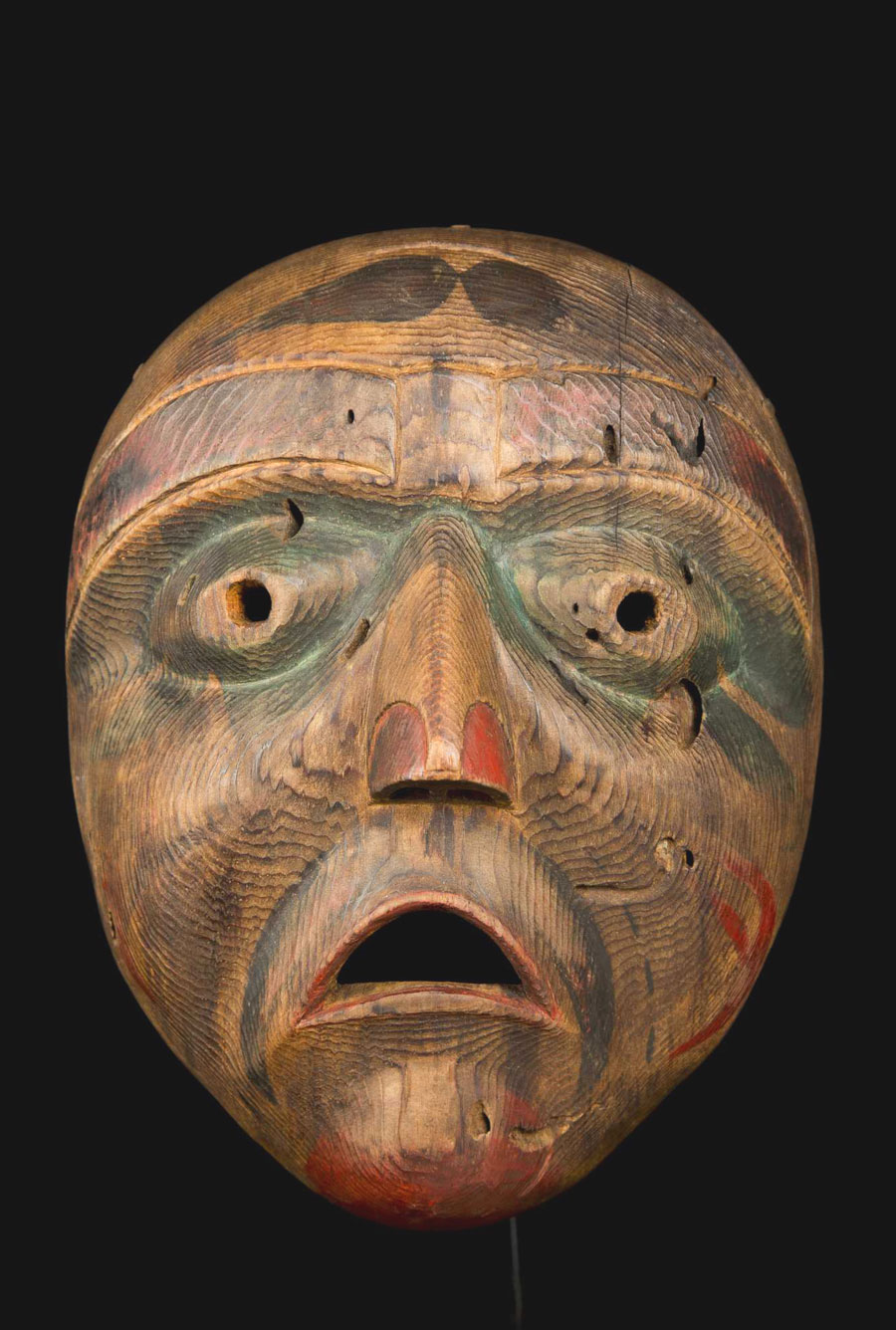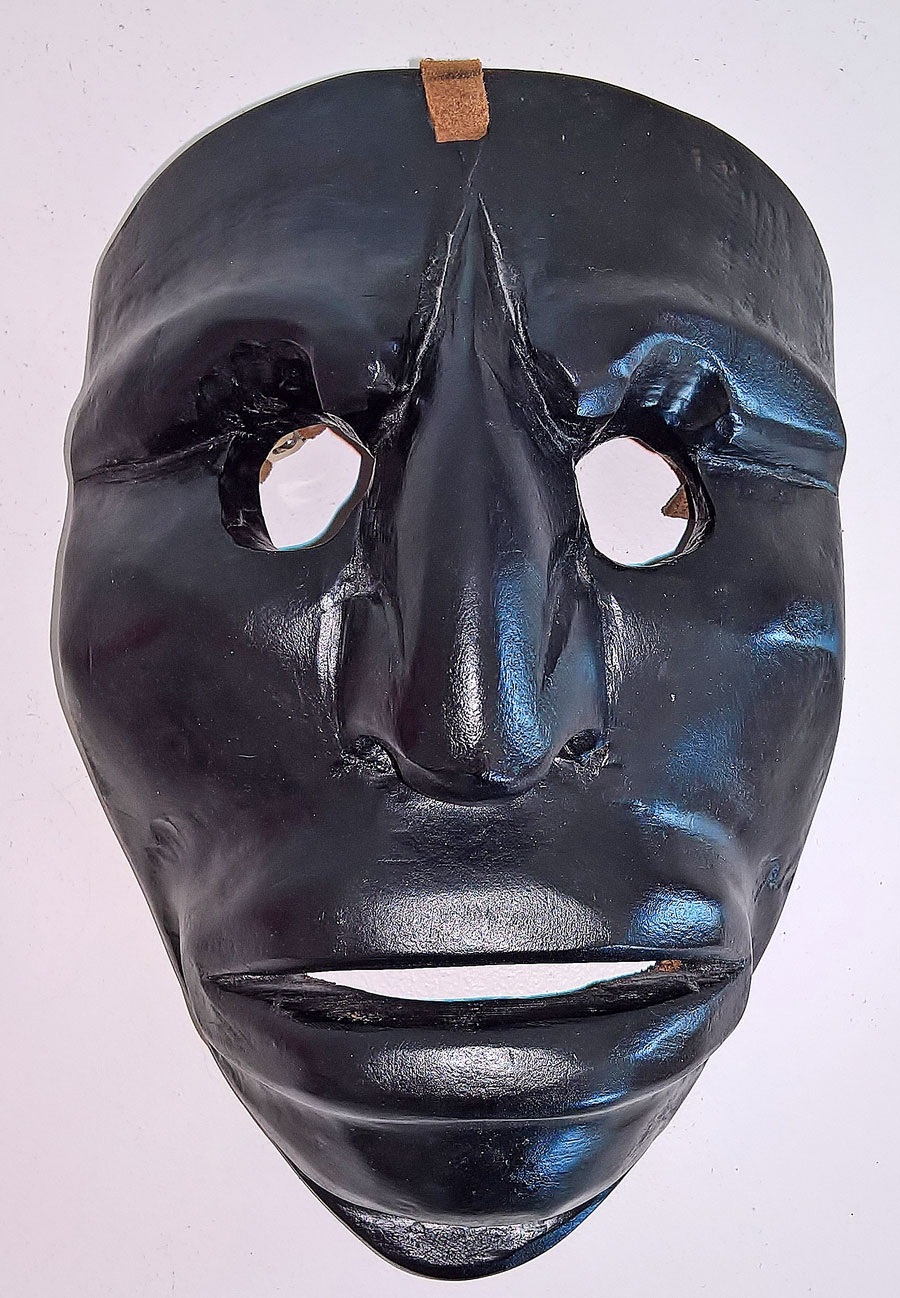 Q: I would love some help with this mask. I picked it up in an antique/junk store in Maine. It was one of the higher priced items in the place. I paid $75 for it because I loved the look. The shop owner new nothing about it. It shows age, is made of a soft wood, and hand painted. Any info would be much appreciated. Steven, 1419 Q: I would love some help with this mask. I picked it up in an antique/junk store in Maine. It was one of the higher priced items in the place. I paid $75 for it because I loved the look. The shop owner new nothing about it. It shows age, is made of a soft wood, and hand painted. Any info would be much appreciated. Steven, 1419
A: This female character mask has an unusual color combination that is quite pleasant. It appears to have been used and could be old. Look closely at the rear and you can see two holes that were used to hold a bite bar in place. It would be bitten down on and worn by actors in dance dramas known as wayang topeng. The dancers were from the island of Java in Indonesia and have been performing these entertainments for hundreds of years. The following is a little history of this classic tradition. B+
The dance and drama are a high and rich form of culture but also the most efficient way to learn refined manners, and altogether a very valuable kind of social training. The graceful elaborate hands, delicate turn of wrist and the highly articulated head, demonstrate the Javanese penchant for ornamentation and their great attention to details. The Javanese place a very high value at emotional control, social difference and avoidance of conflict. The facial expression must be pleasant but emotionless and the movements smooth, controlled, never sharp or rushed.
Improvisation or individual interpretation and expression are very limited. The dancer has to identify completely with one of the well known ideal characters, usually taken from Mahabharata or Ramayana epics (from India). The stories are usually known by heart by the audience so there is no suspense involved at all. The main attraction is to appreciate the dancer’s ability to become one of the particular characters.
The dance and drama used to be taught in the courts or villages are now studied in private schools, national dance academy or academy of performing arts. Some dances; formerly only allowed to be learned by princes and princesses are now taught to anybody, even to foreigners. Apart from this, the teaching methods have changed little. Dances are learned through osmosis and no movements are broken into separate parts. The pupils learn by imitating the teacher with occasional correction here and there as well as the endless repetition.
The Ramayana Ballet of Prambanan, intended for the tourist, has a big influence on dances and drama in Java nowadays. Obsession with details is less then before (to adapt with big stages), stories are made shorter (to prevent audience getting bored) and the dialogues have almost completely been deleted.  
|


 Old Bella Coola mask from the NWC
Old Bella Coola mask from the NWC
 Sardegna carnival mask from Italy
Sardegna carnival mask from Italy
One Comment
Martin Francisco
Check out this Java mask which is very similar to your mask.
Look at this on eBay
https://rover.ebay.com/rover/0/0/0?mpre=https%3A%2F%2Fwww.ebay.com%2Fulk%2Fitm%2F173974093464